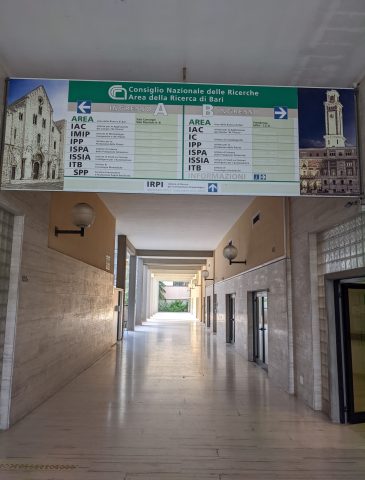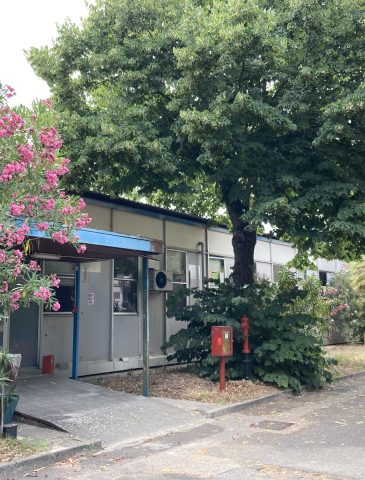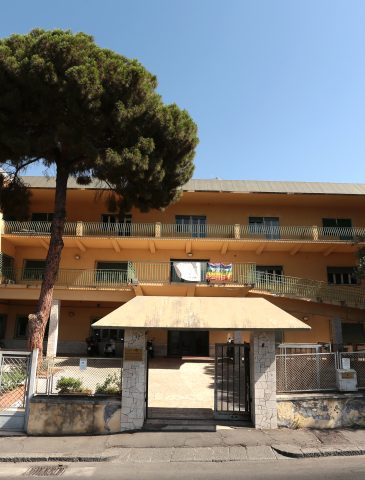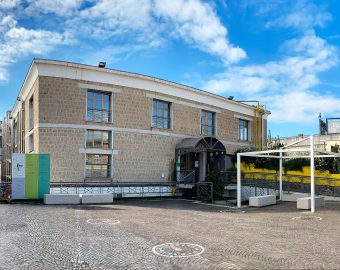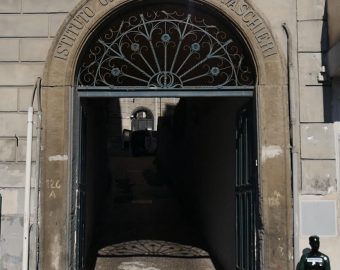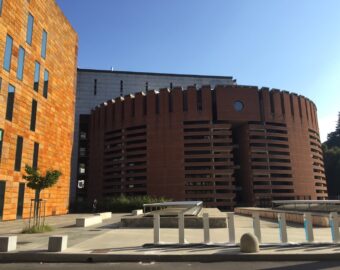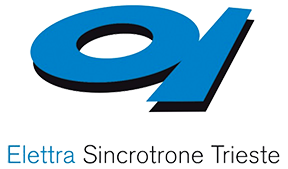
Institute of Crystallography
Research Activities
The research activities of the Institute of Crystallography are divided into three main application areas: Health, Materials, Environment in a systemic approach (one-health oriented).
The scientific skills of the Institute of Crystallography, oriented to develop new experimental and / or methodological problem-solving-oriented approaches, , together with its research infrastructures, allow a significant participation in research projects funded at bilateral, European, ministerial and regional level, in synergy with universities and companies.
The laboratories of the Institute of Crystallography are resources available for basic and applicative research in Health, Materials, Environment studies.
Venue
URT and work places
Infrastructures
The Research Infrastructures have no constraint of institutional or national membership, as defined the European Strategy Forum on Research Infrastructures (ESFRI), an advisory body of the Council of the European Union.
Instruct
XRD1@Elettra
The beamline project dates back to 1990, as a joint project between the Department of Chemistry of the University of
Rome “La Sapienza”, Elettra Sincrotrone Trieste S.c.p.A, and the Institute of Structural Chemistry of the CNR (which in
2002 merged in the actual Institute of Crystallography)
The current beamline status has been planned in2005, to provide a brighter beam for monochromatic as well as
SAD/MAD experiments and high throughput in protein crystallography.
 The layout of the beamline (Figure 1) consists of a pre-focusing cylindrical mirror that delivers to the nitrogen-cooled
The layout of the beamline (Figure 1) consists of a pre-focusing cylindrical mirror that delivers to the nitrogen-cooled
monochromator an almost-parallel beam, which allows obtaining a monochromatic radiation with a ΔE/E of about 10 –
4 , necessary to operate in anomalous scattering conditions. The monochromatic beam is finally focused on the sample
by a toroidal (bendable) Pt-coated silicon mirror.
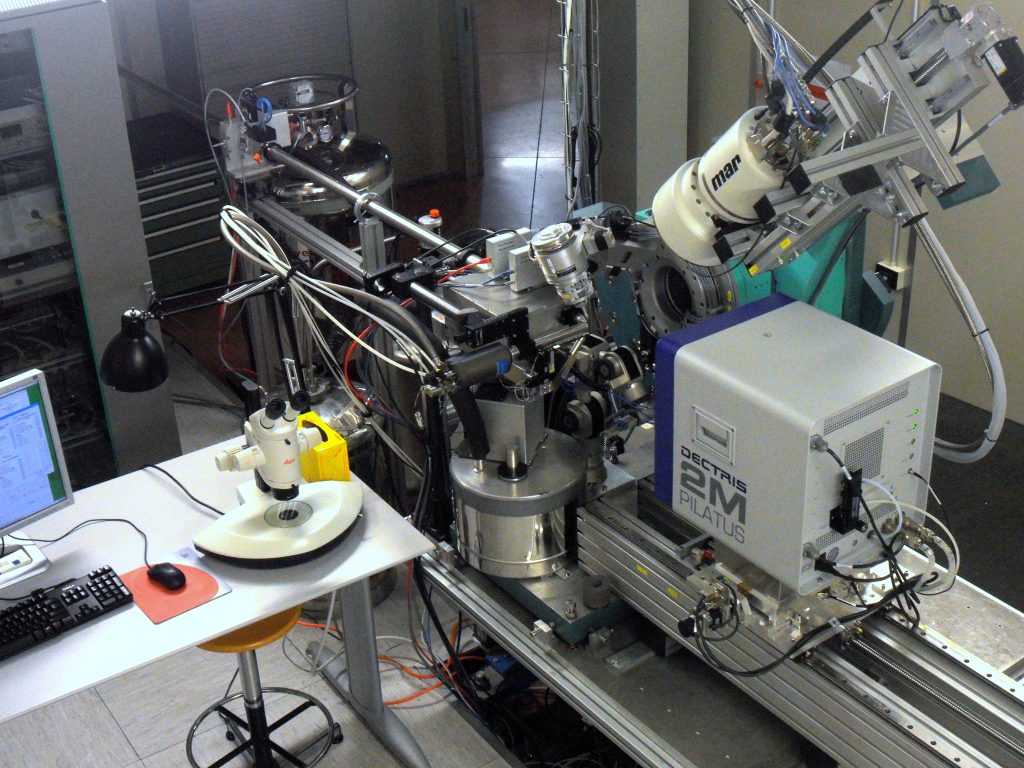
- Figure 2
In the experimental station, (Figure 2) sample alignment is provided by a Huber k-geometry three-axis goniometer that allows the accurate orientation of the sample. Single-crystal Macromolecular crystallography just requires a single axis; nevertheless, different crystal orientations may be useful for specific applications. Moreover, the degrees of freedom proper of the k-goniometer are exploited in the automatic crystal mounting system. The reduced hindrance of the k-geometry makes also space for ancillary equipment required for sample monitoring or sample conditioning
While the k-goniometer allows a high flexibility in sample orientation, a bidimensional fast detector Pilatus 2M from Dectris collects the diffracted pattern. The detector is fast (read-out time: 5 ms) with a wide detecting area (253 x 2 288 mm 2 , dead area of 7%), no electronic noise and high dynamic range (20 bits, dynamic range > 10 6 ). The characteristics of Pilatus 2M are optimal for macromolecular and more in general single crystal diffraction
measurements. Other possible kind of experiments include High Pressure Powder Diffraction, Wide Angle X-ray Scattering from weakly diffracting materials, Grazing-Incidence Wide Angle X-ray Diffraction experiments from thin films and 2D-ordered materials.
Automatic sample mounting of frozen crystal through a Sample Changer that can accommodate up to fifty frozen crystals mounted on sample holders complying with SPINE standards, can be performed at liquid nitrogen temperature. A robotic arm collects the sample from the storage and mounts it on the goniometer head, where the sample is kept under a 100 K nitrogen stream from an open cycle cryostat (Oxford Cryosystems 700).
Outreach
The Institute of Crystallography organizes numerous workshops and conferences with the strategic objective of spreading scientific skills, consolidating its national and international reputation, promoting the transfer of knowledge, increasing national and international networking activities.
The Institute of Crystallography organizes thematic schools with the strategic objective of consolidating scientific knowledge for university education, establishing a stable relationship with universities and schools for job orientation.
The Institute of Crystallography carries out dissemination activities with the strategic objective of enhancing interaction with the territory, building a stable relationship with schools for job orientation, bringing young people closer to research, intercepting new talents and helping to improve the perception of the civil society for research.
The museum aims to tell part of the "Scientific Adventure" of Crystallography. A scientific museum, as a cultural project for the public understanding of science and technology through the knowledge of objects, tools and devices. A direct and effective way to bring science to people, but also an important opportunity to collect and preserve the tools that have often stimulated, in crystallographers and engineers, creative ideas and allowed the development of advanced and innovative methodologies in experimental research.
Partnership
The Institute of Crystallography has several partnerships with both public and private entities aimed at expanding knowledge in specific development sectors, identified among the macro areas of European strategic interest.


